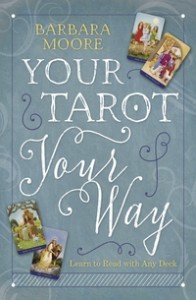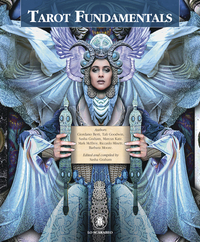Llewellyn Publications's Blog, page 50
October 4, 2016
Demons and Pagan Gods: Re-evaluating My Stance
Readers, please enjoy this guest blog post by Aaron Leitch, author of several books, including Secrets of the Magickal Grimoires, The Angelical Language Volume I and Volume II, and Essential Enochian Grimoire.
Greetings, Goetes!
If you’ve been following my posts lately, you likely know I am in the middle (or, maybe, just the beginning) of an adventure into the realms of goetia. It is, to be completely honest, my first time exploring this side of things. That’s not to say I haven’t made a few scouting missions into the underworld—believe me, I have stories!—but I have always considered myself primarily an “angel worker.” Frankly, my youthful attempts to engage the spirits of the underworld were met with less than stellar results. At some point after I completed the Rite of Abramelin, I asked my Guardian Angel when I could begin working with the spirits and the system of goetia outlined in that grimoire, and was bluntly told, “When you understand what goetia is…” Believe it or not, it would be many, many years before she could break me out of my original (dualist) mindset and see goetia in its true light. And, most amazing of all, very little of what I’ve learned is truly hidden information; most of it was always right out in the open for me to see, if only I hadn’t been blinded by my own reality tunnel.
I’ve been documenting some of the highlights of my learning process. Jake Kent’s Encyclopedia Goetica had a massive impact upon my studies and practice—which you can see in my rather excited review of the Geosophia volumes of that series: From the Greeks to the Grimoires. From there my explorations led me to a rather shocking realization about the actual roles played by Satan, demons, and Hell in the grimoires; which I briefly discussed here and elaborated upon in a lecture I have now given in a couple of different venues.
One of my first major steps into finally working with the chthonic spirits was the performance of a goetic invocation of the Elementals, which I did at two separate Pagan festivals over the course of a year or two. (Visit here and here for more information on those.) In both cases, I called upon the Kings of the four quarters of the world (Oriens, Paymon, Amaymon, and Ariton) to open the gateways and bring the Elementals through. (I was a bit unsure about doing this at first, as I had not known the four Kings to have any direct relationship to the Salamanders, Undines, Sylphs, or Gnomes. However, I would later learn I was very wrong—they have very deep connections (but that’s a subject for another blog!)
Suffice it to say those two invocations opened a veritable floodgate of new insight and information into my life. I began to discover the interrelationships between the spirits of nature (which the grimoires collectively refer to as “Elementals”) and those of the underworld. I finally understood goetia—not as the name of a popular grimoire that lists a few demons, but as an ancient and rich tradition underpinning much of the Western Mysteries. Once that came into focus, I began to see just how goetic even our modern systems of theurgy really are beneath the surface. (Though I haven’t published it as of yet, I have given a lecture at the HOGD about the relationship between the Golden Dawn and goetia—such as our primary initiation rituals taking place in the Hall of the Dead and a Tomb, respectively.)
At long last, my original Neoplatonic dualism was dissolved, and I could see the spirit realm quite a bit clearer. It’s not a place firmly divided between “above” and “below.” There are no strictly celestial entities. The most powerful of the gods and angels nearly always have the ability to come and go in the underworld at will; in fact, that is exactly what makes them the most powerful deities! The spirit world is much more akin to the animal kingdom—just one big chaotic mass of creatures living in an ecosystem. Some of them are big, some of them are smaller, some of them are friendly, and some of them are jerks. And a lot of them are all of these things at once. An entity can appear as an angel in one grimoire, yet be listed as a demon in the next—not due to some mistake on the part of a scribe who didn’t know what he was copying, but simply because that same entity could operate on both levels.
And that brings us to today, and what I wanted to share with you now. You see, when I wrote Secrets of the Magickal Grimoires I was still viewing the world through the lens of dualism. In that book, I describe a universe firmly divided between the celestial and the “infernal” (I wasn’t using the term “chthonic” yet). From that stance, I made a rather strong argument against the common occult idea that demons (or at least a number of them) were originally Pagan deities who have been demonized by Church propaganda. A rather famous example—and one I focus upon in my book—is the Goddess Astarte, who history remembers as a beloved Goddess of love, sex, and motherhood. The writers of the Old Testament, who saw her as a competing deity to their own, demonized her with the name “Ashtoreth”—purported to be the name Astarte modified with the Hebrew vowel-points for their word for “Abomination.” She became a male demon (Christians didn’t believe any spirit or angel could be female), and he seems to embody all the negative aspects of sex and love. My argument was that these two entities cannot be the same being. One is celestial and the other is infernal, one is benevolent and one is evil, one is female and one is male. While I admitted to the obvious historical relationship between Astarte and Ashtoreth, I firmly held to the belief that the Jews and Christians had created a new being in Ashtoreth, divorced from and even directly opposed to Astarte.
But, what if we remove dualism from the equation? If there is no clear distinction between celestial and chthonic, my argument suddenly carries much less weight. They aren’t different entities merely because one is “above” and one is “below.” As I said before, Gods can and do appear in both places at will. So that only leaves me with the second half of my argument: each entity represents polar opposite forces. Both are associated with Venus—but Astarte is everything good about Venus, while the demonized Ashtoreth is everything bad about it. Can a group of people simply take a Great Goddess, declare her a filthy demon, and make it so?
Actually, there may be more to this question than it first appears. Humor me for one moment while I ask a very unique question: Did the Christians demonize her at all? Ok, that’s not fair, because of course they did—they demonized everything. But, what if they aren’t the ones who came up with the demonic attributes for Astarte? What if it was her own worshipers who did that? I bet you didn’t balk at all when, above, I described Astarte as a goddess of love, endeared to her people, did you? Yet, Astarte is essentially the Palestinian form of the Babylonian Ishtar—where she was originally a Goddess of love, sex, and motherhood. Oh—and she was also the goddess who stormed the underworld, banging on its gates and threatening, should they fail to open for her, to cause a freaking zombie apocalypse on the Earth. I quote her: “I will bring up the dead to eat the living. And the dead will outnumber the living.” And when Ishtar returned from conquering the underworld, she returned to her throne surrounded by demons who now served her. When she found her husband sitting on her throne, she had the demons drag him screaming back to the pit.
Y’know…. love, beauty, motherhood…
And that isn’t all. Just look at the Egyptian form of this same Goddess, called Hathor. Once again we find a Goddess of the people, in charge of love and sex and beauty and procreation—and when she got pissed off she went on the warpath and tried to consume the entire world in solar fire. It turns out this wasn’t uncommon for Mother Goddesses, because they weren’t actually goddesses of love at all, but of passion. And that meant they were equally in charge of both love and war.
And it doesn’t stop at Mother Goddesses. As I stated previously, most of the more powerful deities and angels have connections to the underworld—be it Michael or Raphael, Osiris or Ra, Hermes or Persephone, Samael or Lucifer. All of these beings have dual celestial and chthonic forms. These darker underworld forms of the deities were recognized by their worshipers, and it was hardly from an attempt to demonize their gods. These cultures didn’t view the underworld as a place of evil—they celebrated it as the residence of their ancestors. (See, for example, the celebration of the “Day of the Dead” in many cultures around the world.) Sure there were plenty of ugly, dangerous entities who lived down there, too—but they didn’t make up the entirety of the underworld. And the existence of those dangerous entities didn’t make the underworld “evil” any more than the existence of predators in a forest makes the forest “evil.”
But when a god enters the underworld, that god takes on its chthonic aspect. We see this quite plainly in the Greek Magical Papyri, which depicts several Egyptian celestial gods—such as Isis and Osiris—in bestial demonic forms that would be unfamiliar painted on an Egyptian tomb. Yet their existence in the Papyri tells us they were recognized in Egypt, and their magicians/priesthood knew how to work with them.
In the night sky, Astarte is the shining and beautiful Venus star, but when she storms the underworld she suddenly takes on claws, fangs, bat wings, etc. She has to be bigger, badder, and nastier than anything else down there. The ancient cults of Astarte (and Ishtar, Hathor, etc.) recognized this fact, and honored her darker aspects as well as the lighter. (I have little doubt there would have been priests who specialized in one path or another.) Later, misguided Christians would encounter this kind of Pagan observance, declare it “devil worship,” and attempt to destroy it. For instance, have you ever seen a modern Christian’s reaction to a Voodoo ceremony? They can just barely tolerate clean, pretty, Wiccan rituals, but show them a skull or any symbol related to the dead, and they run screaming. Thanks to 2000 years of bad propaganda, the Western mind has been trained to see chthonic symbolism as “evil” and nothing else.
So the Christians may have “demonized” many Pagan gods, but that doesn’t mean they are the ones who came up with the chthonic forms of these deites. The mere existence of an image of Ashtoreth with claws, bat-wings, holding a snake, and riding a rat (as she appears in the Goetia) is not sufficient proof that this “isn’t Astarte.” It may just be a talismanic image of what she looks like in the underworld, assumed to be something evil by Christian scribes. And if that is the case, then it obliterates the remaining leg of my argument against Astarte and Ashtoreth being one and the same. They aren’t separate because one is celestial and one is infernal, and they aren’t separate because the Christians “invented” Ashtoreth whole-cloth. In fact, it now makes much more sense, academically as well as practically, to view Ashtoreth as merely another form of Astarte, who was another form of Ishtar, who was another form of Inanna.
And the same is likely true of other “demonic” entities with Pagan origins, such as Bael (Baal), Ammon (Amen), Haures (Horus), Oriens (Lucifer), Ariton (Enlil), and a host of others who we always assumed were “turned into demons” by the Christians. Apparently, they had demonic faces all along. All the Christians added was the “evil” label.
So, have you explored the chthonic path of your Patron Deity?
Our thanks to Aaron for his guest post! Visit Aaron Leitch’s author page for more information, including articles and his books.
October 3, 2016
Being Present
Readers, please enjoy this guest blog post by Amy Leigh Mercree, author of the new Joyful Living.
 Affirmation: “I am present in my body and I am filled with pleasure and bliss.”
Affirmation: “I am present in my body and I am filled with pleasure and bliss.”
So, how can you feel truly present? This question is asked by people from all walks of life, of every age, and in all kinds of ways, like: “How can I feel more alive?”
Start simple. With the palms of your hands, start at the soles of your feet and rub briskly moving up your legs and body and repeat aloud or in your mind, “I am here now. I am present.” And just feel what it is like to be fully in your body. Really bring your awareness to that experience.
Now try to bring your conscious awareness to your feet, really inhabit them. Then do this with your feet and legs. Then be present your feet up through your torso, bringing your awareness all the way to the tips of your fingers. And then from your feet all the way to the top of your head—your entire body. Can you feel your entire body simultaneously? You might feel this awareness like a pulsing or a tingling.
What if you got into that deeply present place and then explored the sensual, whether solo or with a loving partner in the same state of awareness? Would everything be richer and more intense? Would you experience sensations and pleasure in a new way? Would your soul feel fed to know you are seeing your sacredness and if a partner is involved he or she is too? Give it a try and find out!
How would it feel to be present while experiencing glorious sensory pleasure?
Exercise: Activate Your Senses by Being Present
List at least 20 sensory pleasures in your journal. Some ideas are: Bubble baths, eating cool and flavorful Sno-Cones, clean, soft sheets in the middle of the afternoon for a sun-drenched cat nap.
When you are finished, say the following affirmation aloud: “I am a sensual being of light. I am fully present in my body and I’m full of bliss.”
Experience at least one of these sensual pleasures per day for the next twenty days. Your life will be so much more pleasurable, you will probably want to make another list and experience more pleasure to awaken your senses every day. Learn to be present to the ever-flowing bliss in your heart and soul by being present to your senses.
The joy derived from healthy, sensory pleasures enriches the intricate tapestry of the human experience. #joyfulliving101
Our thanks to Amy for her guest post! For more from Amy Leigh Mercree, read her article, “Four Powerful Ways to Live a Joyful Life Today.”
September 26, 2016
Tarot for Spiritual Growth
Readers, please enjoy this guest blog post by Melanie Marquis, author of A Witch’s World of Magick, The Witch’s Bag of Tricks, Witchy Mama, and the new Modern Spellcaster’s Tarot.
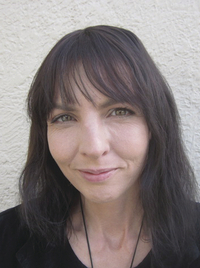 While many Pagans use the tarot for divination and spellwork, the tarot’s ability to further one’s spiritual growth is not nearly as often recognized or utilized. We typically read the cards in order to decipher unknown aspects of the mundane reality of the future, and when we cast tarot spells it’s often in the pursuit of an immediate, tangible, worldly goal. As Pagans, the concept of independent spiritual development is something a majority of us believe in, but how many of us actually use all the tools for spiritual growth that we have available to us? How many of us actually pursue spiritual growth actively, and on a daily basis? The tarot is an excellent tool for spiritual growth because not only does it provide valuable insights into what may be holding you back and what is needed to propel you forward, it’s also very convenient and quick—meaning you’re much more likely to use it even if you’ve had a busy day. Deep meditation and elaborate rituals have their benefits, certainly, but when you’re pressed for time, a few minutes with your tarot deck can help you stay on track spiritually so that you will continue to evolve into more than you are (as Carl Llewellyn Weschcke would often say), rather than stagnate in less than you can be.
While many Pagans use the tarot for divination and spellwork, the tarot’s ability to further one’s spiritual growth is not nearly as often recognized or utilized. We typically read the cards in order to decipher unknown aspects of the mundane reality of the future, and when we cast tarot spells it’s often in the pursuit of an immediate, tangible, worldly goal. As Pagans, the concept of independent spiritual development is something a majority of us believe in, but how many of us actually use all the tools for spiritual growth that we have available to us? How many of us actually pursue spiritual growth actively, and on a daily basis? The tarot is an excellent tool for spiritual growth because not only does it provide valuable insights into what may be holding you back and what is needed to propel you forward, it’s also very convenient and quick—meaning you’re much more likely to use it even if you’ve had a busy day. Deep meditation and elaborate rituals have their benefits, certainly, but when you’re pressed for time, a few minutes with your tarot deck can help you stay on track spiritually so that you will continue to evolve into more than you are (as Carl Llewellyn Weschcke would often say), rather than stagnate in less than you can be.
Mix your cards into a loose pile as you think about your spiritual development. Ask the cards, “What is holding me back at this time?” and choose a card or a few cards, whichever ones seem to call to you. Think about what the card or cards represent, and contemplate the nature of this obstacle. Is this an obstacle you have placed in your own path unnecessarily, or is it an unavoidable challenge that must be faced? Next, ask the cards, “What can I do to grow spiritually? What does my spirit need to embrace right now?” Choose however many cards you like, and interpret them with positive action in mind. Do the cards indicate any specific steps can you take towards furthering your spiritual development? Is there a particular emotion or archetype represented that you need to take to heart? Remember the messages of the cards as you go through your day.
When we neglect our spirits, they fade. When we acknowledge and nourish our spirits, they shine. Let the tarot help you in this. With a deck of cards like the Modern Spellcaster’s Tarot and just a few minutes a day, you can give your spirit the attention and encouragement it needs to truly thrive.
Our thanks to Melanie for her guest post! For more from Melanie Marquis, read her article, “A Tarot Built for Magick: Modern Spellcaster’s Tarot.”
September 21, 2016
Evolving Tarot
One of the main reasons people turn to tarot is because they want answers, clarity, and guidance. Driven by that need, we want to desperately prescribe absolutes to tarot: how it works, how we use it, and what the cards mean. However, I think clinging to that rigidity is counter to the spirit of tarot. Tarot is a tool that continues to fascinate us because it is flexible enough to adapt to changes in individual, social, and human consciousness.
Consequently, I believe the way we teach tarot should change. And that’s why I wrote Your Tarot Your Way. Below is an (unedited) excerpt from the first chapter explaining more about this idea.
It’s All About You
Everyone has basic questions about tarot, like “how does it work?” and “how do you know what the cards mean?” Here’s where tarot gets difficult. It’s not in learning to read the cards. It’s in trying to understand how tarot works. Here’s why that is the hard part: we are all looking for an answer, a clear, concise, undeniable truth answer. We think there is one universal truth behind these mysterious cards and if we can discover it, we will have access to the secrets of the universe. We read one book that says one thing and another that says something else and we think “so and so doesn’t know what he’s talking about!” We get hung up on trying to figure out the Capital T Truth. Or at least, that’s the way I felt when I started out. After all, if the cards are supposed to tell the future, they must have some rules for accessing that all-important information. The Capital T Truth is this: tarot has never been absolute…not in the way it looks or in the way it has been used. But if there is no original written-by-God-and-given-to Moses in stone Truth, it seems impossible to unlock the secrets that we think the cards hold. On the other hand, this realization makes everything easier. I’ll tell you why soon and as the chapter title says, it is all about you. But first let me prove my point about tarot never having been absolute.
Here is a Brief History of Tarot
In museums, we have remnants of a few tarot deck made in the 15th century, in Italy. The tarot cards that we now call the Major Arcana (in modern decks, these twenty-two cards are named and numbered) were not numbered. Tarot decks back then were handmade works of art, often full of luxurious gold leaf, and only the richest families had them. They were sometimes given as wedding gifts, with images of the bride and groom gracing some of the cards. The cards that we now call the Minor Arcana (in modern decks, these fifty-six cards are divided into four suits and include an ace – ten, Page, Knight, Queen, and King) had no scenes on them, just suit designators like modern playing cards (the one notable exception to this rule is the Sola Busca Tarot, which you will hear about again very soon).
When the printing press made printed items more affordable, the cards gained in popularity, and then lots of people played the game of tarot, also called tarocchi.
As is the case with games, tarot fell out of popularity for a few centuries until the 18th century, when a few people starting finding old decks. Because the cards were full of symbols, they decided that the cards were not just a game but had deeper allegorical meanings. These people began writing books about the meanings of the cards, sometimes claiming that the meanings came from ancient Egypt. Today we have no evidence that there is a solid Egyptian connection. This doesn’t mean there isn’t, and it is fun to imagine wild histories about the cards. However, strictly speaking, we can’t claim any Egyptian roots with any confidence.
During the Victorian-era when secret societies and occultism were all the rage, the cards were used in various secret societies to, well, hold the secrets. They were also used for divination and more “ancient” texts were “discovered” or at least referenced. We are pretty sure that most of these were invented and not discovered. During this time came one of the biggest changes in tarot. A man named Arthur Waite hired an artist named Pamela Coleman Smith to illustrate a tarot deck. They were both members of the Golden Dawn, one of the more popular Victorian-era secret societies. Arthur didn’t care much about the Minor Arcana and left a lot of the image design up to Pamela. She was influenced by that Sola Busca deck mentioned earlier and instead of using only suit designators, she painted images that reflected what the cards were said to mean.
What’s really interesting is that this deck, often called the Waite-Smith Tarot (although it was originally called the Rider-Waite Tarot…because Rider was the name of the company that published the deck), has come to dominate modern tarot, especially in America. Most tarot experts say it is the best deck with the most authentic symbols and meanings. And most tarot decks that are popular these days (including the one you just bought!) are modeled after the Waite-Smith Tarot. In recent decades, there have been many books published about the symbols used in these particular cards, analyzing everything. For example, the number of lines forming the rays of the sun in the Sun card was thought to be meaningful but a closer examination of the printing history shows that the number of lines changed in the earliest printings because one of the plates used to print the cards cracked, creating an extra “ray.” Further, in the spring of 2015 a book called The Secrets of the Waite-Smith Tarot by Marcus Katz and Tali Goodwin shows that so many of the symbols come from somewhere other than where we thought (such as a great many are from Shakespeare and some simply from the summer cottage where Pamela lived while painting the deck).
Despite the symbols not necessarily meaning what we thought or why we thought, for over a century people have used this deck (and ones like it) to great effect. Symbols are powerful things and they get so much of there meaning from the society from which they emerge and also from the individual looking at them. Finding meaning in a symbol is actually a very active experience based on innate archetypal recognition, cultural environment, and personal experience. It is not necessary to go back in time to some mythical age where the cards fell to earth fully formed and with precise and unchangeable meanings. The tarot cards are sometimes called “keys.” They are keys that open doors and behind those doors are worlds of meaning, some of which don’t even exist until you walk through. I think of it as being like those scientific theories that explain how the observer affects the thing that is being studied.
Other changes happened to the cards, beginning with Pamela and her charming paintings. The Major Arcana cards became numbered (and order in which these cards were numbered caused and continues to cause much debate among tarot experts). Images changed radically. For example, in the earliest decks, the Fool looked like a crazy person (or perhaps like a mentally-challenged person), often with his pants falling off and his rear end (and sometimes even his genitals!) hanging out with a dog trying to bite it. Today, the Fool is shown as a pure soul about to incarnate into this plane of existence. Also, in earlier books, the meanings of the cards seemed arbitrary and didn’t necessarily reflect the image on the card, which meant the image was merely decorative and not meant to be interpreted. This is very different from today, where it is almost more common to read the image rather than refer to any sort of esoteric meaning.
For a long time, tarot was used to tell fortunes. This is probably still one of the most common uses for it today, because, really, who doesn’t want to know the future? However, even this has changed. Before the later twentieth century, people had a much more deterministic or fatalistic view of the world. Depending on where you were born, what class you were born to, and what gender you were, it was not too difficult to “predict” your future because it wasn’t like you had a lot of choices. Today, we are more of a “you make your own future” people. We believe not just in free will but in the ability to do or achieve whatever we want. So the idea of telling the future changes, because the future is not set in stone.
Tarot is now also used for other things, such as creative writing, journaling, magical work, and brainstorming. Because of his notion of synchronicity and interest in symbols, many tarot readers are fans of Carl Jung. His work has influenced the direction of modern tarot. In fact, some psychologists incorporate tarot into their work with patients. Each year in New York, there is a conference about Tarot and Psychology, a clear indication of the level of interest among psychology professionals.
Besides new uses, there are more decks than ever before with all sorts of artwork and themes. Some of these break with the Waite-Smith tradition and create new ways of exploring what tarot can be. Oh, and in parts of Europe, you can still watch locals buy a pack of tarot cards at the corner tobacconist’s shop and play a game with a friend at the local café.
Maybe that wasn’t as brief as I led you to believe. The history of tarot is a lot longer and very interesting. If you want to know more, check out Robert Place’s The Fool’s Journey: The History, Art, and Symbolism of the Tarot or Mary K. Greer’s blog at https://marygreer.wordpress.com.
I know that not everyone cares about history and you really don’t need to know the history to read the cards. It is, though, important to understand at least this very basic timeline because this is how we know that there is no full and complete Capital T Truth. This, it turns out, is actually great for you because it means becoming a reader has become easier. This means that everything about the tarot, everything about what you will do with the cards and how they will work in your hands, is determined by no one but you. Your use of the tarot cards should reflect your beliefs…about how the world works, about spiritual ideas, about what your role on this planet is, to name just a few. You might need some help in translating your beliefs into tarot principles, but I’m here to help with that. To get started, let’s gather some data about you. Hurray! This is our first recess period!
September 20, 2016
7 Ways to Stress Less

This past Sunday, I ran across a Buzzfeed post with 7 ways to help you stress less during the coming week. As a Type-A person who battles anxiety, of course I had to read. And with each of their fabulous tips, I kept thinking to myself: We have a book for that! And that! And that!
So, below I’ve paraphrased their tips to stress less, along with information on each of our books to help you find more information.
Tip: Take a candlelit bath or shower while listening to some soothing music. I personally am a HUGE fan of a long soak in the tub, preferably with a glass of pinot grigio and a good book. Looking for more ways to use baths to relax, renew, and re-invigorate? Check out The Book of Sacred Baths , by Paulette Kouffman Sherman, PsyD.
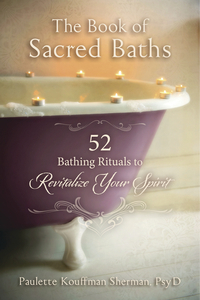
Tip: Download a meditation app. Not everyone has a smart phone, and of those of us that do, our app preferences vary. (I’m not one for meditation apps, but I do have one that includes soothing rain shower sounds and another puzzle app that I play when my anxiety gets overwhelming.) Apps not your thing? Check out our huge selection of meditation CDs, including Voice of the Soul from Alanna Fairchild.

Tip: Start following a bunch of dogs (and cats!) on social media. I personally believe that the Interwebs were created specifically for cat videos (sorry, Tim Berners-Lee!), and studies have shown that taking a short break to watch animals is good for your health and helps productivity. Looking for some cute, inspirational animals to help you through the day? Check out Blue Angel Publishing’s ridiculously cute and inspirational animal books and oracles, including The Little Book of Happiness
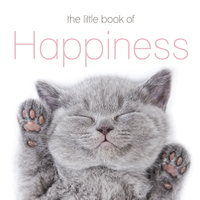
Tip: Try a restorative yoga pose. Yoga is a fabulous practice, especially when it comes to relieving stress. Check out Yoga Therapy for Stress & Anxiety , by Robert Butera, Erin Byron, and Staffan Elgelid.

Tip: Buy an adult coloring book. We love this coloring book craze! It is a mindful practice that helps relieve stress as well as bolster our creativity. Try any one of our available coloring books, such as the new
I know this list is missing a great number of items, since we all have those things that work for us. What do you use to relax and stress less?
September 19, 2016
Letting the Past Speak
Readers, please enjoy this guest blog post by Rich Newman, author of The Ghost Hunter’s Field Guide, Ghost Hunting for Beginners, Devil in the Delta, and the new Haunted Bridges.
 One of the best things about writing ghost stories, and covering the subject of hauntings in general, is the strong tie the subject has to history. So many times I hear the details of a particular paranormal tale and I think to myself, “Oh, boy, here we go again…” Many of the spooky things we hear about haunted places sound the same: The same eyewitness accounts, the same activity happening, the same reasons for the dead staying around.
One of the best things about writing ghost stories, and covering the subject of hauntings in general, is the strong tie the subject has to history. So many times I hear the details of a particular paranormal tale and I think to myself, “Oh, boy, here we go again…” Many of the spooky things we hear about haunted places sound the same: The same eyewitness accounts, the same activity happening, the same reasons for the dead staying around.
This is where history usually kicks in and reminds me that we are all different—and that we all live unique and interesting lives. Having just finished a book called Haunted Bridges and currently working on a book about haunted Civil War sites, I’ve been soaking up the history and stories concerning these wonderful locations.
So what if the local B&B has a rather boring spirit that likes to knock on the bedroom door (and nothing else). Chances are that particular home has seen a lot of interesting things over the years, and it was most likely inhabited by some fascinating people. What if that knock on the door happens because the matriarch of the house was attempting to wake her children to save them from a fire? Or perhaps the house was under fire from Confederate troops swarming the area. Perhaps she perished attempting to save her family.
When you delve into the details of any story and research the background of any haunted location, you may be surprised what you will learn. And usually it speaks as much to what all of us endure in our lifetimes—and the human condition in general—as it does to the particulars of those who once lived there.
This is what draws me to ghosts and spirits and all the awesome places they love to inhabit. Take the time to learn the history of the individual places you visit and I bet you will enjoy it, too.
Our thanks to Rich for his guest post! For more from Rich Newman, read his article, “Investigating Haunted Bridges.”
Tools for Memory: Retention, Recall, and Reminiscence
Readers, please enjoy this guest blog post by Margaret Ann Lembo, author of Chakra Awakening; The Essential Guide to Crystals, Minerals, and Stones; Essential Guide to Aromatherapy and Vibrational Healing, and the new Crystal Intentions Oracle.
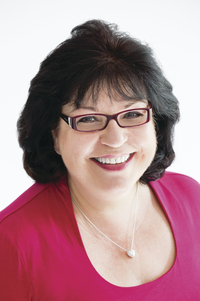 As we move deeper into the energy of autumn, I find myself reminiscing about childhood, Halloween, and the whirlwind of past holiday seasons. Scents bring up memories. Odors and scents conjure up emotions. In fact, the sense of smell is the most powerful trigger of childhood memories. For instance, have you ever opened a box stored in the attic—maybe containing an old toy, Christmas decorations, or a holiday tablecloth—and the scent of whatever it is wafts from the box, flooding your consciousness with memories of a specific day or experience? The olfactory sense (our ability to process a smell) is the primary trigger of that memory.
As we move deeper into the energy of autumn, I find myself reminiscing about childhood, Halloween, and the whirlwind of past holiday seasons. Scents bring up memories. Odors and scents conjure up emotions. In fact, the sense of smell is the most powerful trigger of childhood memories. For instance, have you ever opened a box stored in the attic—maybe containing an old toy, Christmas decorations, or a holiday tablecloth—and the scent of whatever it is wafts from the box, flooding your consciousness with memories of a specific day or experience? The olfactory sense (our ability to process a smell) is the primary trigger of that memory.
There are many gifts of the earth that are perfect for memory and mental clarity. In past GemSpots and AromaSpots I shared how clear quartz, golden calcite, lime, lemon, and others gems and essential oils can be allies for the intention of retention and recall for work and study as well as spiritual growth. Now, let’s connect with the fossil, orthoceras, and the essential oil, rosemary. (Regarding the orthoceras, fossils are the preserved remains of animals, animal parts, plants, and other living organisms from the past. Generally, fossils are composed of rocks that contain limestone. Orthoceras fossils are elongated shells generally fossilizing in limestone.)
On a spiritual level, rosemary, a hardy evergreen shrub, helps you awaken spiritual memory and focus. The ancient energy of rosemary provides a deeper understanding of yourself through enhanced memory retrieval of previous incarnations. Inhale this essential oil to rid yourself of negative self-talk and clear your mind when preparing for meditation, prayer, and other spiritual practices. Use this essential oil as a reminder to stay mindful and use self-observation practices for personal development.

Inner work is good, and a fossil nearby can serve as a reminder to take time for self-examination—without judgment, of course!
On a spiritual level, the ancient energy of orthoceras provides a deeper understanding of oneself through enhanced memory retrieval of previous incarnations, which is a matching vibration while you employ rosemary essential oil for the same purpose. This fossil is ideal to use prior to, during, and after regression therapy to make the most of memories of past experiences and the lessons. Hold the orthoceras in one hand or keep it nearby as you pause for contemplation and journaling to deepen the realizations derived from the regression experience.
On a physical level—whether you are an accountant, a doctor, a hair stylist, or a student—rosemary can be your ally to help with memory, mental clarity, and recall while also acting as an insect repellent or a disinfectant. The orthoceras will help you dig into your memory banks to call up any knowledge you have in store.
In addition to the rosemary and the orthoceras, you can also connect with Archangel Uriel to be your heavenly assistant to tune into wisdom and higher knowledge. Archangel Uriel is a perfect companion to call on to increase your awareness during spiritual practices. The wisdom and peace that flows on the vibration of Uriel’s wings offers mental clarity to retain and use the higher guidance. Imagine the golden ray of Archangel Uriel streaming through your consciousness to not only remember but to integrate the wisdom.
Use this affirmation through this month as Archangel Uriel lights your path. Inhale the rosemary and gaze at the othoceras and repeat:
I am clear, energized, and connected. I am grateful for all my creative and business skills. I earn unlimited income doing what I love. I have great mental and emotional clarity. It is easy for me to awaken my consciousness and be fully present in my daily activities. I am grounded and focused.
Our thanks to Margaret Ann for her guest post! For more from Margaret Ann Lembo, read her article, “16 Aroma-Energetic Wellness Tips.”
September 12, 2016
Ancestors of the Spirit
Readers, please enjoy this guest blog post by Brandy Williams, author of The Woman Magician, Practical Magic for Beginners, and the new For the Love of the Gods.
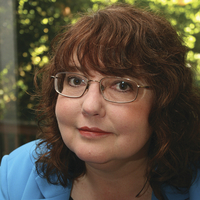 The ancestors came to me when I was 16. I was struggling to survive an abusive family. They’d ripped me out of the school where I had friends and ported me half a country away. I had rejected their values, their racism and sexism, their scam-people-and-run-away work ethic, and the Catholic faith in which they had raised me. Alone, battered, suicidal, I literally did not know who to pray to. So I prayed to the universe. “Help me!”
The ancestors came to me when I was 16. I was struggling to survive an abusive family. They’d ripped me out of the school where I had friends and ported me half a country away. I had rejected their values, their racism and sexism, their scam-people-and-run-away work ethic, and the Catholic faith in which they had raised me. Alone, battered, suicidal, I literally did not know who to pray to. So I prayed to the universe. “Help me!”
The ancestors heard a child in trouble and answered my desperate call. I clearly saw a ring of people, women and men, standing around my bed. I recognized them as teachers and healers, although I did not know any of their names. I knew some of them were quite, old and others were very recently ancestors. I didn’t think they were related to me; they were the ancestors who had felt drawn to me by bonds of affinity. They told me that I was bright and loving and worthwhile. They would always be there, they loved me, and they believed in me.
When I converted to Pagan religion I looked for my ancestors and felt cheated. My mother’s family was Catholic and my father’s was Protestant for as far back as anyone had traced. I knew that once there had been people in my ancestral line who had practiced Pagan religion openly, but that had been so long ago that I had no way to connect my story to theirs.
The message I got from the academic works that taught me about ancient Paganism was that Christianity had destroyed Pagan religion in Europe. “Great Pan is dead,” they crowed. I felt gut-punched when I read that. The gods couldn’t be dead! I saw them in ancient statues, I felt them in my heart. But I had no ancestors to take me by the hand and lead me to them, no one I knew by name.
Gradually I learned that this wasn’t the whole story. Pagan rituals survived as folk custom, in dance and song and passion plays. This kind of Pagan continuity calls to those with blood ties to the country. I wasn’t born in Europe, though; I was born in America to settler folk. My heritage is European but I am not rooted in the ethnic heritage of my parents. The traditions of the people who lived here before me are not my traditions either.
When I discovered the teaching tradition of the Pagan philosophers and the theurgic ritual that expresses that tradition I felt I had finally come home. These teachers had lived, as I do, in large cities. They moved from one city to another, Alexandria to Athens to Rome. Their religion was still rooted in the ways of the country, the old seasonal celebrations, but it had a distinctively cosmopolitan feel. Their contemporary students revered them as gentle, kind, and noble. They seem like genuinely good people.
I came to know them through writing their stories. Their biographers recorded their flaws as well as their virtues. Generous Plotinus managed the estates of orphans so they would not be defrauded of their inheritance, but he never bathed! Hypatia welcomed Christians and Pagans alike to her classes. On the other hand, she loved to drive her horses up and down the broad Alexandrian streets, a habit that registered on her detractors as flaunting her upper-class wealth. Porphyry thought deeply and wrote profusely, but when his brilliant mind turned on itself he could fret himself into a state and consider suicide.
The Platonic teachers may not be related to me by blood, I may not have Greek or Italian or Syrian heritage, but for these teachers that doesn’t matter. You don’t have to be related to them to learn from them. You don’t have to be white or male or rich to be a theurgist. There is no barrier, no in group, no exclusion. All that they require is that we study them. They ask us to read their writings, to think for ourselves about the world and our place in it, to practice the spiritual tradition sincerely. These are my ancestors. They are ancestors for everyone who connects with their spirit.
Today I start my theurgic practice with a prayer, published in my new book For the Love of the Gods, the History and Modern Practice of Theurgy, Our Pagan Inheritance:
I call on those who have come before me,
Ancestors of my body and spirit.
I walk in the world now,
The link between the future and the past.
As I walk in my day
Grant me the support that ancestors can give
And welcome me into your number when my living journey is done.
When I pray to them sincerely, they come to me and guide me. I feel their presence just as I did when I was 16. I don’t know exactly who guided me in that moment, but I do know that the teachers who guide me today offer the same sustaining encouragement that lifted me up that night. I owe them my life.
Our thanks to Brandy for her guest post! For more from Brandy Williams, read her article, “Bodies of the Gods.”
Re-Evaluating our Re-evaluation of the Holy Guardian Angel
Readers, please enjoy this guest blog post by Aaron Leitch, author of several books, including Secrets of the Magickal Grimoires, The Angelical Language Volume I and Volume II, and Essential Enochian Grimoire.
Greetings, Angelophiles!
Here’s another one from the Solomonic FB Group files! Somewhat recently, occult scoundrel and esoteric hooligan Nick Farrell posted the following comment to a thread about the Holy Guardian Angel (or “HGA”):
“I think the HGA is a big dumbed down modern con-trick. Sure Abramerlin featured him, but it was more of a gimmick, It was a pick part of Crowely’s ideas and of course Crowley was right about everything especially when it comes down to livestock. Now you get everyone asking you about HGA as if it is a vital thing… or worse your divine self (it really isn’t). I know… not a popular thought but there you are.”
Not a popular thought indeed! It was hardly just Crowley behind the HGA push in the Western Mystery Tradition. Israel Regardie picked up that flag and flew it in his work, and from those guys it was picked up by—well pretty much everyone else. (Except the Neopagans—but we’ll get back to that in a bit.) Especially among the Golden Dawn and Thelema crowds, the concept of achieving “Knowledge and Conversation of the Holy Guardian Angel” became paramount. It was billed as the highest achievement of the adept, the “thing” toward which we should all be working. Without it can nothing else be accomplished! It is our Western version of Enlightenment.
That’s a very lofty philosophy, and I can’t blame those early Golden Dawners (yes, including Crowley) for sensing something vastly important at the heart of the Abramelin Rite. I certainly did! The Holy Guardian Angel is not described as a Cherub or Seraph or as coming from any of the known choirs of angels. I believe there is a Gnostic (-influenced!) core at the heart of the Book of Abramelin, and that its intent is to contact an entity from a much higher realm. This realm was called the Plermoa (fullness) by the ancient Gnostics, and it represented the perfection of the Godhead before the creation of the Heavens and the Earth. It was an “Eighth Heaven,” if you will, existing above and beyond the usual seven planetary firmaments. And the beings who populated it—such as the Logos, Sophia, Spiritus Sanctus, and numberless super-archangelic beings—were called Aeons instead of mere “messengers.”
Also according to Gnostic philosophy, this Pleroma was the true origin of the Human Soul. The job of every Gnostic was to awaken from the slumber of the senses and subservience to the harsh laws of the archonic spiritual rulers of Matter and Time. Once awake, it was necessary to seek an ascetic and initiatory path back home again—to cease the endless cycle of reincarnation into a world of suffering. (Did I mention some of these ancient Gnostics lived right next door to India?) Gnostic religion was quick to adopt the story of Jesus—they even wrote one of the four Gospels, the Book of John—because his message had been much the same: “Put down your worldly things, take up your Cross, and follow me [back Home].”
A bunch of Victorian masons couldn’t have asked for a more sublime magickal operation than the Abramelin ritual. It has no worldly focus; in fact, it is just the opposite: intended to summon a pure being from the highest divine realm who possesses only the overriding purpose to break you free of the Wheel of Karma and guide you back Home again. Even A.E. Waite couldn’t find a problem with that concept! At least, so long as you casually ignore all the goetia at the end of the Book of Abramelin, oh and all the conjure spells in the middle.. but that’s ok because most folks usually do. Even where practical magick is unavoidable, you should now have infallible guidance from above on what you should or shouldn’t do.
Crowley went so far as to try the ritual, though he didn’t complete it. (He would later “complete” it under utterly ridiculous circumstances—but, hey, at least he was in the desert at the time!) Regardless of whether or not one believes he was successful, he did meet an entity named Aiwass who went on to help him create and establish the Thelemic system. Is it any wonder, then, that the HGA concept would be central to such a tradition? Regardie and the modern Golden Dawn essentially inherited their view of the HGA’s importance from there.
But now we run into a snag. As wonderful and transcendent as the HGA may be, we don’t actually find him everywhere, do we? For all the influence the Golden Dawn and Thelema had on the shape of modern Neopaganism, the HGA didn’t make the trip from one to the other. Wicca describes a Goddess and God, with individual groups or practitioners focusing upon patron deities who represent Them. The original Golden Dawn—and this one may shock you—didn’t mention him at all. And you’re not going to find him in any of the ATRs, nor in any form of indigenous witchcraft or conjure around the world. And (guess what?), all of them follow their traditions and get results without the HGA.
So has the concept of the HGA been overblown in the Western Mysteries? You bet it has! Nothing changes what the HGA represents, and if that’s the kind of thing you’re into then it’s absolutely a way to go. Without a doubt, if you were to perform the Rite successfully and have your Guardian Angel at your side (and in your head) for life, you would consider it the most important thing you had ever done. You would rightly attribute all your success to it. I certainly do.
Yet, at the same time, it is in no way what the modern Western Mystery Tradition has made it out to be. It is not the equivalent to Enlightenment. “Knowledge and Conversation” is not some alien and out-of-reach state to be achieved, just maybe!, by only the highest ranking and most experienced adepts. In fact, the Book of Abramelin is intended for beginners—written by Abraham of Worms for his second-oldest son who had not inherited the secrets of the Qabalah. If you are called to the HGA path, then you need to start with Abramelin, not end with it!
So we must (grudgingly) admit Nick Farrell has a point. The HGA concept has indeed been exploited for many years by charlatans—none of whom have actually performed Abramelin, mind you!—who wish to elevate themselves to some special place in the social pecking order. “I am special because I have met and spoken with my HGA.” It’s not very different than the old days, when everyone had “contacts” in the spirit world. And of course: “My contact is bigger and badder than yours, if you really have one at all, which I doubt.” There truly is nothing new under the Moon, is there?
And so we are seeing a re-evaluation of the Holy Guardian Angel in the Western Mysteries today. Why, Nick was able to post that snarky comment about the HGA right out in public, where everyone could see, and got no blow-back from it. Aspirants are learning that Abramelin represents one path that can be chosen, but they are not wrong for going in a different direction. People can and do use magick all the time without a Holy Guardian Angel.
Except now we’ve hit another snag, I’m afraid….You see, while it is true the HGA—by that name—doesn’t appear anywhere outside of the Book of Abramelin, the concept behind the Guardian Angel actually pops up everywhere. In many traditions, these guardians are called “head spirits;” essentially a patron deity who has been bonded to the head of the aspirant. In the ATRs, the aspirant is considered the spiritual child of the deity to which they are bonded, and are henceforth priests or priestesses of that deity’s tradition. In some ancient shamanic cultures, the same bonding was viewed as a marriage ceremony—after which the human would be under the tutelage and guidance of his or her spiritual spouse. Of course, none of these deities are the “same thing” as the HGA—as the former are part of the world while the latter is transcendent—yet the process of invoking a higher spiritual being to “permanently possess” a human remains the same.
As I progress in my own path, I find myself writing about these head spirits more and more. They are something of a lost secret in the modern Western occult traditions, and I am discovering how ultimately detrimental it was to our magick and mysticism that we forgot about them. Your head spirit is your teacher and guide, your protector, your co-ritualist, and your power source. (In the sense of a battery, it charges your spells!) Not to mention the fact your head spirit can also be the Gatekeeper—another lost magickal secret. The gatekeeper, or intermediary spirit (usually Mercurial, but sometimes Solar in nature), is the one who knows how to open the way between the physical and spiritual realms, and knows how to carry your invocations to their target. He is the one who brings spirits to you when you perform evocations, and he is the one who makes your spells work after you’ve cast them.
Can you do magick without a head spirit? Sure. But you’re doing it completely alone, banging on the doorways and screaming into the wind in the hopes someone will hear you. Work at it long enough and you might even generate some useful relationships on the other side. That, in fact, seems to be the standard modern Western method. (Even Don Kraig talks about it in his Modern Magick—how solitary practitioners must work hard to establish a link with the angels and spirits, as opposed to initiates of orders who are directly introduced to them.) So, I am not suggesting that your magick can’t or doesn’t work if you don’t have a head spirit. I am, however, suggesting it is much more difficult and even potentially dangerous without one. If you haven’t explored this area, I would highly recommend you look into it.
So, head and intermediary spirits can be/are vitally important to magick. And what Western example do we have of a head spirit? Why, it’s our old overblown friend the Holy Guardian Angel! There are others as well, such as the Nativity Angel—a lower form of Guardian who is linked to your birth chart. There are also angelic guardians associated with every part of your chart, such as the angel of your Ascendant, your Sun Sign, your Part of Fortune, etc. There are even old Hermetic theurgic practices involving altars, statues, and invocations of Pagan deities that are strongly reminiscent of the older head-spirit initiations. (For the record, Crowley invented one of those that is often conflated with Abramelin, called Liber Samekh.) All of these are more Pagan because they call on deities of the physical world (the stars, planets, elements, etc), while the HGA is supposed to lead you to a higher place. Yet, I say again, in practice they are nearly identical.
And so we are coming ’round full circle. The HGA was once considered the highest achievement of the adept—something only the best of the best could hope to touch. But that didn’t exactly pan out, because it simply isn’t true. So we began to re-evaluate our viewpoints on the subject—to de-mystify it, so to speak. Yet, before we could even get that job done, we discovered that the HGA might be important after all. Not in the way we first thought, of course, but in a whole new way. Well, really a very old way that we had forgotten. Now that we know what a head-spirit is, and an intermediary to boot, we can come to appreciate the HGA as something vital to our magick without, perhaps, taking it too far.
And, now that I can freely declare how awesome the HGA is again, I can go right back to thinking Nick Farrell is wrong. All is right with the universe. 
Our thanks to Aaron for his guest post! Visit Aaron Leitch’s author page for more information, including articles and his books.
September 7, 2016
The Challenges of Reading Intuitively
Tarot Fundamentals is a big book packed with great information laid out in an interesting and pleasing way. While it is aimed at beginners, there is enough information here to interest even a more seasoned reader. We all don’t know everything and the breadth of ideas presented in this book promises something for everyone.
Many readers seek to hone their intuitive skills, sometimes at the expense of learning, practicing with, and incorporating the structure of the deck and the symbolism in the images. I think that sometimes we think that pulling in intuitive information or even relying solely on intuition will make a reading better…and easier to do. What is easier than learning the parts of and the symbol system of a deck? Not learning it and just saying the first thing that pops into your mind and calling it intuition. Intuition is a vague idea, with many people not really having a clear definition in their minds about what it is and what it is not, as well as how it differs from instinct, emotional reaction (or trigger), and gut reactions.
Further, people don’t always think about the downsides or challenges that readers would do well to keep in mind while relying on intuition. Tarot Fundamentals includes plenty of ideas for honing and incorporating intuition but it also includes a balanced point of view. Here is an excerpt from the chapter on intuition:
The Challenges of Reading Intuitively
Reading intuitively presents two main challenges. These can negatively affect the outcome of the reading and black a reader’s growth.
Projective mechanics
Our intuition is “ours”. It belongs to each of us, individually. If a reading or a card image evokes a powerful emotion or recollection in the reader, and she is relying only on her intuition, the interpretation may seem clear and immediate. But in this case, the reader is not really looking at the card, but projecting herself, her memories, her opinions, or her experiences on the card, overwriting it.
If you feel that a card resonates too strongly with your intuition, take a step back, breath deeply for a few seconds and look again.
Losing track of the structure
Using intuition alone, the reader may stray quite far from the traditional meanings and interpretations. Sometimes this is a very good thing and marks the moment a reader is finding her own path into tarot and her gifts. Other times, the opposite is true. The reader is losing sight of what tarot is. She follows intuition without anchoring it to the cards and the images. Intuition is a realm where boundaries are soft, mutable and undefined. Without boundaries, the reader may become lost.
Llewellyn Publications's Blog
- Llewellyn Publications's profile
- 243 followers


